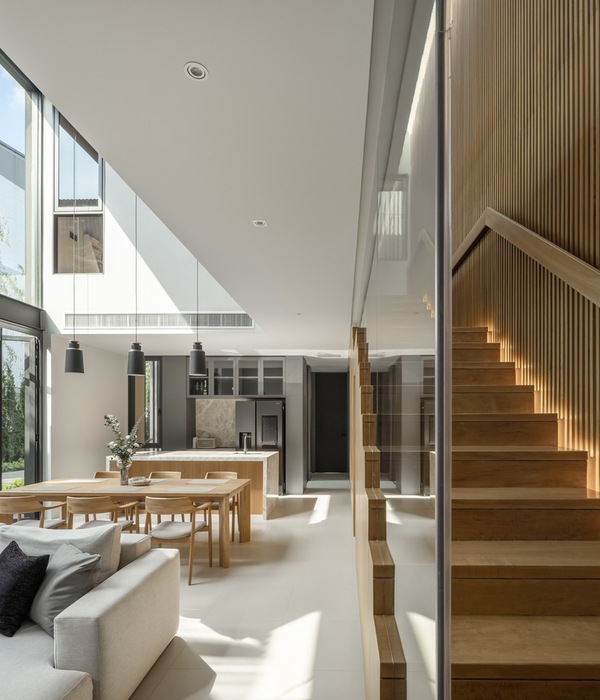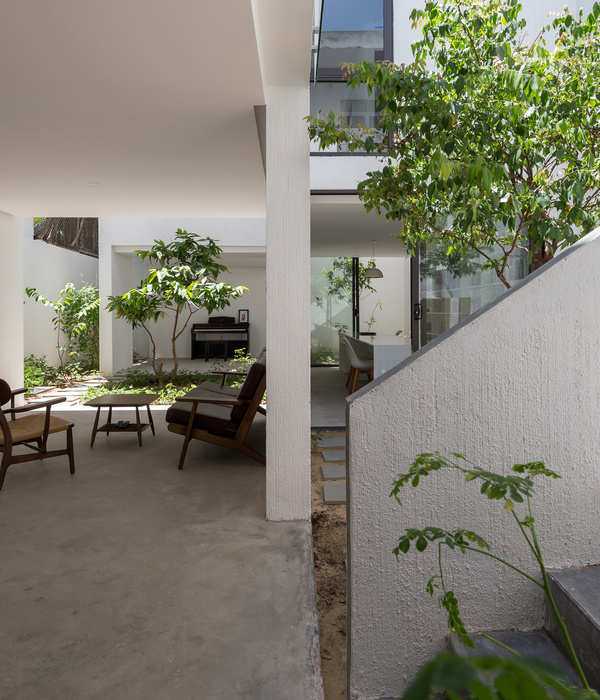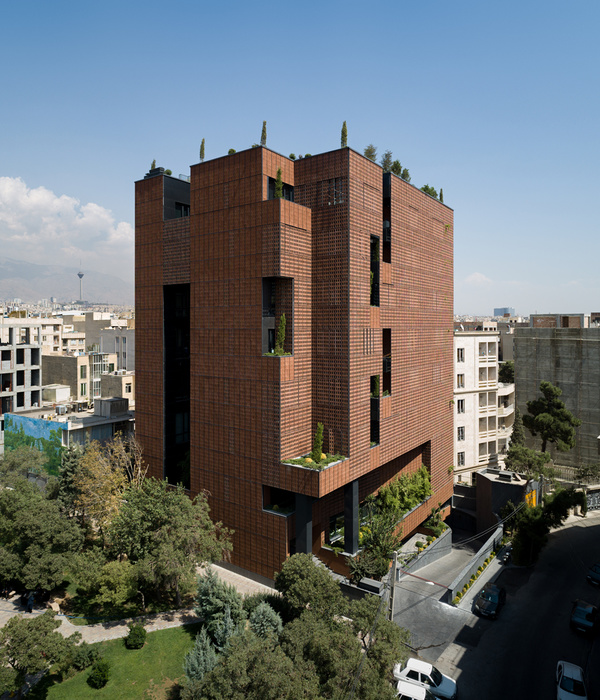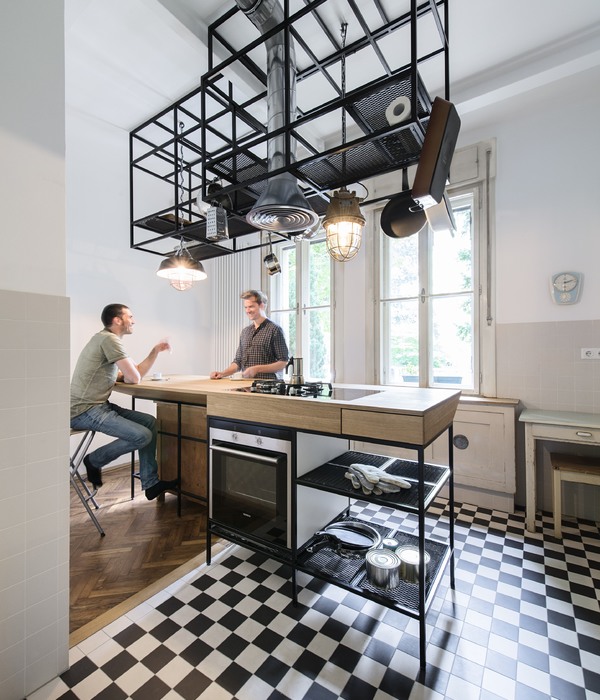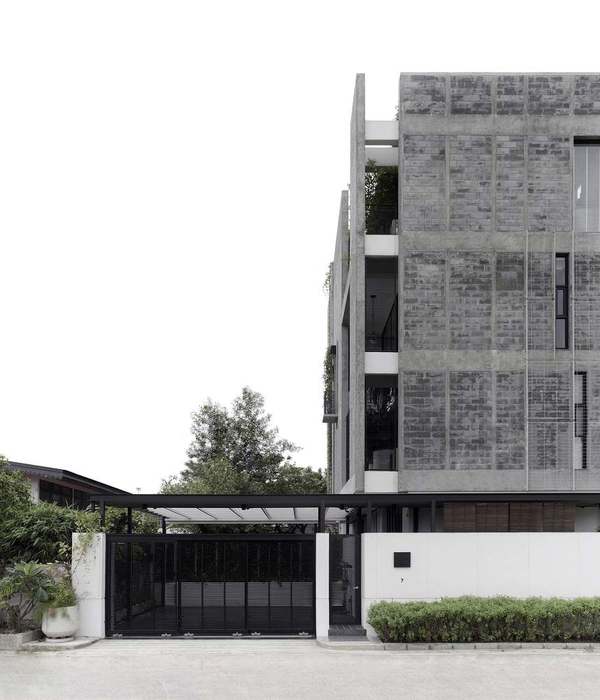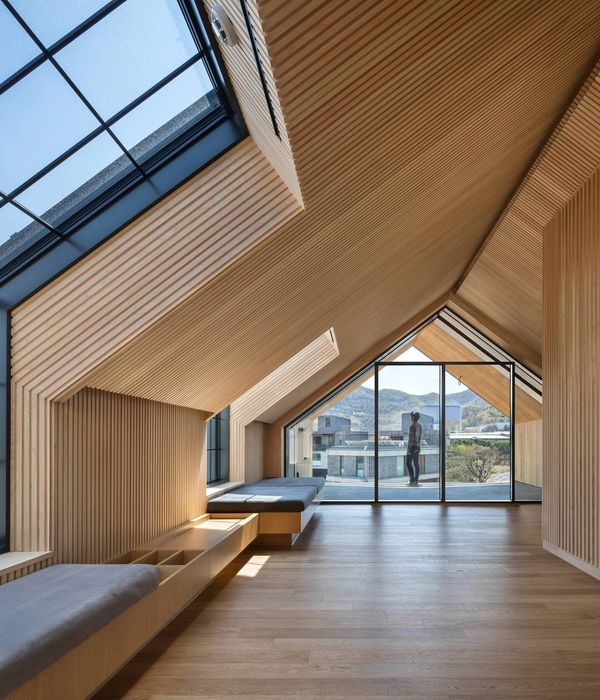Giving a new chance to a ruined building whose roof had collapsed after a fire in the mid-90s of the past century was the starting point to designing this house. Singularly placed and out of scale, erected in a sort of no man’s land between high-traffic roads with different heights, a green wasteland, a commercial area, a sea view above the thick and disorganized agglomeration of houses bordered to the south by the Atlantic Ocean, and another one at the top of the mountain to the east with the city to the west, the intervention was necessarily large.
The first step consisted in validating the structure that was thoroughly assessed and reinforced. Thought from the inside out and aiming as much as possible at preserving privacy in such a unique place, the project considered the views and the direct relationships with the sea, the mountains and the city as an opportunity to rethink a whole strategy of adding external doors and windows as well as a vertical patio facing east and an horizontal one on the covering facing west, thus enabling a connection with the city of Ponta Delgada. In order to modify the almost quadrangular volumetry of 14-meter wide walls divided into two high ceiling storeys, a hip roof in continuous plane and finishing with the walls was installed, giving the house a new skin.
The use of Japanese cedar wood in key points of the house, aimed at serving the purpose of showing the passage of time through oxidation and loss of the more yellowish tone as opposed to the more artificial isolation system proposed, was designed to dissolve the more abstract quality of the pure white volume. With an almost shining white, the house claims its place in this location and peeks at reality without ever denouncing itself.
{{item.text_origin}}

